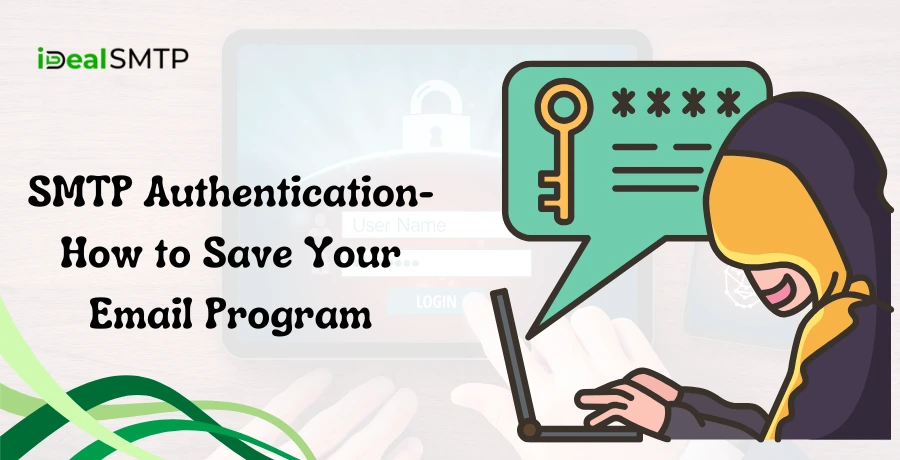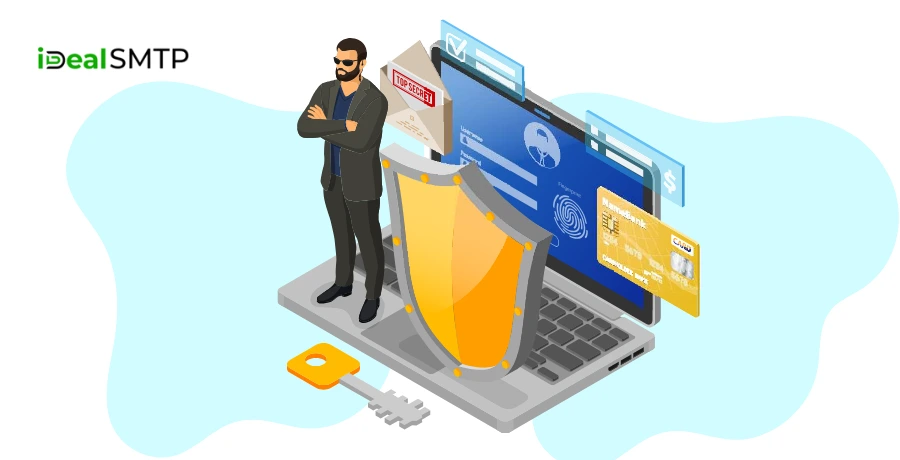In electronic mail communication, the Simple Mail Transfer Protocol (SMTP) plays a fundamental role in the delivery of the message. Despite being effective and popular, SMTP is not secure as it does not contain measures to counter the misuse of programs that support email.

Hackers take advantage of open and vulnerable SMTP servers for spam relay, and phishing, and the worst part of it is that they get full access to your sender’s credibility and your data. This implies that SMTP authentication and security are inevitable necessities to protect your email program.
Here is everything that you need to know about protecting your email infrastructure.
Table of Contents
Pricing
| Trail Plan | Standard Plan | Premium Plan | Professional Plan |
| $50 | $145 | $185 | $225 |
| Sending Limit | Sending Limit | Sending Limit | Sending Limit |
| 1000 Emails/Hour | 1500 Emails/Hour | 3000 Emails/Hour | 5000 Emails/Hour |
What is SMTP Authentication?
SMTP Authentication (SMTP AUTH) is used to check the identity of the user before he is allowed to use an SMTP server to send out his mail. It serves the purpose of denying access to some individuals, to keep the server from bad individuals who try to gain unauthorized access and misuse the server for their gain.
When an SMTP server is not authenticated it becomes an open relay; anyone can use the server to send spam, phishing scams, or even infectious malware. SMTP Authentication solves this issue by forcing the identification of the real sender using credentials commonly a username and password.
How SMTP Authentication Works
- User Credentials
The sender provides their SMTP username and password when configuring their email client or application. - Server Verification
The SMTP server checks the credentials against its database. - Access Granted
If the credentials are valid, the sender is authorized to send emails through the server. If not, the connection is denied.
To ensure the confidentiality of the credentials, SMTP authentication is usually paired with encryption protocols like SSL or TLS.
Why SMTP Authentication is Important
SMTP Authentication is suitable as it safeguards the Electronic Mail and checks and confirms the authenticity of the sender before permitting him access to the SMTP host.
Prevents Unauthorized Use
It assures only permitted users can become a sender of some e-mail through your SMTP server; hence, liabilities of spammers or hackers are unachievable.
Boosts Email Deliverability
Internet service providers such as Gmail, Yahoo, and Outlook use authentication to distinguish between good senders. If not done correctly, your emails are likely to end up in spam boxes.
Secures Sensitive Data
Thus, using the authenticated data transfer method such as SMTP AUTH the code and content of the email are protected from interception.
Protects Your Domain Reputation
Another implication for choosing an SMTP server is that if your SMTP server is used to send spam, then your domain will be blacklisted, and your ability to send e-mails will drastically decrease. Electronic authentication also maintains the reputation of your domain.
Common SMTP Authentication Methods
Basic Authentication (Username & Password)
In a simple method, a sender inputs a username and a password. Though straightforward, its use should always be in combination with encryption usage for security purposes.
OAuth 2.0
A contemporary means of the identity verification process that replaces traditional forms of credential sharing with an additional authentication mechanism. It is also notable to say that MyEmail routinely enjoys the support of the most significant platforms for sending messages.
STARTTLS Encryption
Enhances normal text sending to secure sending of credentials and emails by converting the connection to an encrypted style.
Best Practices for SMTP Security
Some practices for SMTP security. Explain in detail.

Use Secure Ports
Port 465: For the SMTP over SSL protocol, this method can be used (however, its usage is considered to be not safe and is allowed only in specific cases).
Port 587: Recommended for SMTP with STARTTLS encryption 10.
Enable Two-Factor Authentication (2FA)
Having another level of security helps to mitigate the problem of stolen usernames and passwords.
Implement DMARC, DKIM, and SPF
These email authentication protocols help in filtering out that only authorized senders are allowed to send emails on your behalf to minimize the risks of spoofing and phishing.
Monitor and Limit Access
Limit SMTP server interactions depending on the whitelisting characteristic of an IP address or domain rule. Perform due diligence and a brief rotation of credentials as often as possible.
Enforce Strong Password Policies
Users should be encouraged to use different, hard passwords and also change them more often.
Best Practices for SMTP Authentication
Always Use Encryption: Check that your SMTP server supports SSL / TLS for the protection of the credentials along with all the contents of the email.
Restrict Access: You can also lock the servers from access by permitting only those domains through the use of Incredible PBX IP whitelisting or domain-specific policies.
Use Strong Passwords: Policy on stringent passwords and also its change frequently.
Enable Two-Factor Authentication (2FA): Make your email accounts a little more secure.
Benefits of Professional SMTP Services
It is not easy to manage SMTP authentication in-house. Professional SMTP services like iDealSMTP, SMTPget, SMTPmart, or Postmark simplify this process by providing:
- Pre−integrated authentication features.
- Real-time tracking as well as Real-time status and alarms.
- Faster delivery and higher delivery rates.
- Again, compatibility with other popular email marketing tools is enhanced.
For example, iDealSMTP specializes in providing secure, highly available, and affordable SMTP solutions designed specifically for commercial use that will guarantee reliable delivery of e-mail messages without necessarily compromising on security.
Conclusion
SMTP authentication is far more than just a need from a technical point of view it is mandatory for end-to-end encrypted conversation. When done right, you protect your email program from threats, guarantee the deliverability of your messages, and preserve your sender’s credibility.







